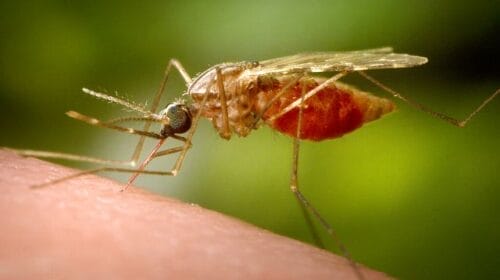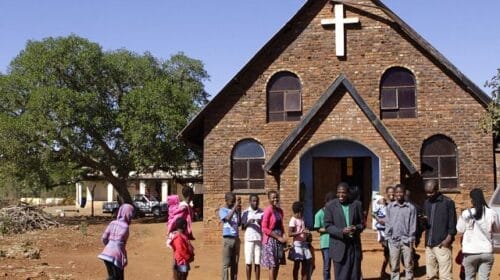Kenya census results on intersex persons and implications

The 2019 Kenya Population and Housing Census results has revealed that there are 1,524 intersex persons in the country.
The census was conducted in August 2019 by the Kenya National Bureau of Statistics and themed “Counting Our People for Sustainable Development and Devolution of Services.”
Though the standard practice of population dada collection was followed in this year’s exercise, the country’s bold decision to include intersex as a gender category stood out, as the East African nation became the first in Africa to recognize intersex during a population count.
While some saw it as a move towards greater gender inclusivity, others like Dr. Appiah-Kubi who is a member of Ghana’s National Coalition for proper human rights and sexual values says once intersexuality can be fixed, there is no need to include it as a gender option.
Speaking on Starr FM’s international relations show ‘World Today Extra’, the academic and lecturer at Ghana’s Dominion University said “for hermaphrodite issues, once they can be corrected, they should be corrected and the traditional male/female allocation remain.”
Dr. Appiah Kubi further asserts that the inclusion of intersex in the census opens up a Pandora’s Box that will bring absolute confusion. However Executive Director of the Africa Centre for International Law and Accountability William Nyarko says there is a need for an official record of intersex persons.
Referencing statistics provided by the UN Free & Equal Campaign, initiated by the UN Office for Human Rights and a researcher, Anne Fausto-Sterling which concluded that around 1.7% of newborn babies across the world can be classified as intersex Mr. Nyarko says “it’s a matter that we need to be looking at critically, in Ghana for instance we need to be collecting data in order to inform policy and law” also on the show was Dr. Joe Mutungi, a Kenyan and medical researcher with the University of Ghana.
On his part he said “One country has set the pace, can it happen in Ghana? I’m pretty sure it can, its depends on how the society takes it upon itself to do it”.
What is Intersex?
An intersex person is one born with a reproductive or sexual anatomy that doesn’t fit the typical definitions of female or male. Sometimes, at birth, the person can be assigned male or female but as they develop, and hit puberty their hormones or anatomy may reveal otherwise.
In other cases, the child is born with both male and female genitalia, with others have ambiguous genitals.
There are several intersex variations and though some can be fixed through surgery, others require hormonal treatment or other forms of medical intervention. Some persons may however go through life never knowing that they are intersex.
The journey towards recognizing intersex persons in Kenya
The decision to recognise Intersex as a gender category in the national census was not arrived at overnight. After years of complaints, litigation and reports made at the Kenya National Commission on Human Rights set up a Taskforce on Policy, Legal, Institutional and Administrative Reforms regarding Intersex Persons in May 2017.
The taskforce had 6 main focus areas; to Compile comprehensive data regarding the number, distribution and challenges of Intersex persons; Undertake comprehensive literature review based on a comparative approach to care, treatment and protection of Intersex persons; Examine the existing policy, institutional, legislative, medical and administrative structures and systems governing Intersex persons; Recommend comprehensive reforms to safeguard the interests of Intersex persons; Develop a prioritized implementation matrix clearly stating the immediate, medium and long term reforms governing the Intersex persons; and Undertake any other activities required for the effective discharge of its mandate.
On page 45 of the abridged version of the report dated December 2018, the taskforce recommended the “Collection of accurate and verifiable statistics on intersex persons.
This will be achieved through: Kenya National Bureau of Statistics, the principal government agency for collecting, analysing and disseminating statistical data to include intersex as a third sex code/category. And inclusion of intersex (code 3) in the Kenya Population Housing Census scheduled for August, 2019.”
That recommendation was subsequently accepted and applied.
Other findings in the 2019 Population census
The census data released on Monday, November 4, 2019 reveals that the country’s population has expanded to over 47.6 million people from 37.7 million in 2009. Females account for 50.5% of Kenya’s total population with capital city Nairobi maintaining the most populous county status with a population of 4.4 million people while Lamu is ranked the populous county with 143,920 inhabitants.
Despite the population increase, the report issued by the Kenya National Bureau of Statistics (KNBS) found that the country’s growth rate has been on a downward trend from 2.9 per cent between 1999 and 2009 to 2.2 per cent between 2009 and 2019.
Findings also revealed that Western counties and Nairobi are the most densely populated regions with the Country’s average household size is at 3.9, which means on average each household has 4 persons.
Since 1969 Kenya has held a census once every ten years. It is therefore expected that the next census will be held in 2029.
Source: Africafeeds.com




